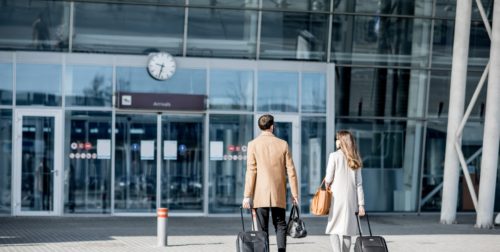The aviation industry is a testament to human ingenuity, connecting the farthest corners of our globe with a network of soaring runways and bustling terminals. However, running an airport involves much more than what meets the eye. It’s a complex and costly endeavour entailing substantial costs encompassing various aspects of operations, maintenance, infrastructure, safety, security, and administration.
In this article, we’ll explore the economics of running an airport, focusing on understanding the costs involved, factors affecting them, ways to improve cost efficiency, and innovative management approaches to lower expenses.
Understanding the Complexities of Airport Operations Costs
Understanding the complexities of pricing of airport operations is essential for effective management and decision-making within the aviation industry. Airports have high fixed costs for infrastructure like runways, terminals, and air traffic control systems, which don’t vary with flight and passenger volumes. Variable costs like staffing, maintenance, and utilities fluctuate with traffic, but reducing them too much can impact safety and service quality.
Airport size affects operations costs, with larger airports benefitting from economies of scale with lower per-flight costs spread across more passengers. However, expanding is expensive, making it challenging for smaller airports to keep up, often resulting in higher fees for passengers and airlines.
Labour-related expenses are another pivotal factor contributing to cost accrual in airport operations. These encompass remunerations, benefits, pension schemes, and regulatory labour stipulations, particularly for unionised employees such as air traffic controllers. Other major cost drivers, like fuel, vary with economic cycles, leading to fluctuating profits.
Furthermore, the imposition of regulations, especially in security, capacity, and noise mitigation following events like the September 11 attacks, add to airlines’ and airports’ fiscal and operational complexity.
To pay for it all, airports rely significantly on levies and rental charges imposed on airlines and concessionaires. However, airports need to maintain reasonable fee structures to attract and retain airline partnerships. It’s a delicate balance, requiring savvy to keep operations smooth, customers happy, and financial stability.
The Hidden Costs of Maintaining Airport Infrastructure
Airport infrastructure maintenance includes several hidden but essential costs. These expenses may not be evident, but are vital for ensuring airports’ safety, efficiency, and functionality. Here are some of the key hidden costs associated with maintaining airport infrastructure:
- Aircraft Ground Damage: Ground operations can cause wear and tear on aircraft components, leading to repair and maintenance costs.
- Environmental Compliance: Costs related to noise reduction, hazardous material management, and carbon emissions reduction to meet environmental regulations.
- Security Infrastructure: Expenses for maintaining and upgrading security systems, including surveillance and access control.
- Utility Costs: Substantial expenses for energy and water supply, requiring efficient resource management.
- Runway and Taxiway Maintenance: Costs for maintaining safe runways and taxiways, including resurfacing and lighting repairs.
- Terminal Buildings Upkeep: Ongoing maintenance of terminal facilities, from HVAC systems to escalators and signage.
- Technology Upgrades: Investments in modern technology for check-in, baggage handling, and communication infrastructure.
- Employee Training: Costs associated with training airport staff in safety and security procedures.
- Regulatory Changes: When aviation rules and industry standards change, it can force expensive updates to infrastructure and operations, adding to the financial burden.
Recognising and managing these hidden expenses is crucial for sustainable airport operation and the growth of the aviation industry.
Balancing Revenue and Expenses: A Challenge for Airport Management
Balancing revenues and expenses poses a significant challenge for airport management. This struggle stems from factors like the dynamic aviation industry, economic fluctuations, and the high costs of maintaining and expanding airport infrastructure.
Airports have enormous fixed costs like staff and expensive infrastructure to maintain. However, their revenue from airlines and passengers can vary significantly with the economy and travel trends. Additionally, landing fees don’t cover all operational costs. To bridge the financial gap, airports diversify their income sources by engaging in various commercial activities like retail, parking, food and real estate. However, unexpected events like recessions or health scares can further hurt revenues.
To effectively address these challenges, airport managers employ various strategies. These include leveraging technology to reduce costs, optimising building efficiency, outsourcing certain tasks, and exploring innovative avenues for revenue generation.
Profitably running an airport requires smart money management and adapting to industry changes. The best airport managers balance saving money, diversifying income streams, and providing quality service to airlines and passengers.
Factors that Impact the Price of Running an Airpot
The cost of running an airport is influenced by many interconnected factors that can vary significantly from one airport to another. These factors can be broadly categorised into several key areas:
- Airport Size and Capacity: Airports with larger passenger and aircraft capacity tend to bear higher operational costs due to increased staffing needs, maintenance requirements, and infrastructural demands.
- Economic Conditions: Economic circumstances also exert an impact on operational costs. Fluctuations in consumer behaviour, like reduced consumer spending, can lead to decreased air travel demand, affecting operational expenses.
- Regulatory Environment: The regulatory environment is of utmost importance. Changes in regulations, such as those related to emissions allowances, can profoundly affect operational costs. Technological advancements, like the adoption of more fuel-efficient aircraft, can also influence these costs.
- Technological Advancements: Being at the forefront of adopting new technologies, airports need to invest in modern technology and equipment continually. This is essential to enhance customer experience, ensure safety, and improve operational efficiency.
Managing Cost Efficiency in Airport Operations
Reducing costs while keeping safety, security, passenger satisfaction, and smooth operations is tough but crucial for airports. Fortunately, there are practical ways to help airport operators cut expenses and ease the burden. Key areas to focus on include:
Here are the key areas for improving cost efficiency at airports:
- Energy Efficiency: Using less energy and switching to renewable sources can cut energy expenses and make operations cheaper.
- Fuel Savings: Using fuel wisely is crucial to saving money since fuel is a major cost in airports. Simple changes in how airports use fuel on ground vehicles and planes can make a big difference.
- Outsourcing and Teamwork: Getting outside help for certain tasks, like cleaning and maintenance, and working together with other companies can save money.
- Smart Staffing: Having the right number of staff at the right times and using their time wisely can reduce labour costs without lowering service quality.
- Tech and Automation: Using technology and machines for tasks like handling bags, check-ins, and security can make things faster and cheaper.
- Maintenance and Repair: Conducting proactive maintenance and repair to prolong the life of infrastructure and equipment can save on replacement costs.
- Aircraft Ground Services: Streamlining ground handling processes, including baggage handling, ground transportation, and aircraft servicing, can reduce operational costs and improve overall efficiency.
Innovations in Airport Management that Can Help Reduce Costs
Innovative solutions that can cut airport operational costs include:
- Data Analytics and Predictive Modelling: Using data analysis to predict passenger traffic, helping allocate resources efficiently and save on unnecessary expenses.
- Biometric Technology: Using facial recognition and biometrics for passport control and security checks to speed up processes and cut labour costs.
- Internet of Things (IoT): Using IoT devices to manage energy, facilities, and maintenance, reducing energy costs and improving operations.
- AR and VR for Training: Using AR and VR for staff training to make it more efficient, reducing errors, and minimising rework and accidents.
Other cost-saving technologies include AI, blockchain for supply chain management, and smart energy management systems.
Conclusion
With careful financial oversight and operational excellence, airports can financially thrive while providing excellent service to airlines and passengers. Consultants like Airport Gurus can provide invaluable expertise and technology assistance to help airport management teams meet this constant challenge.



